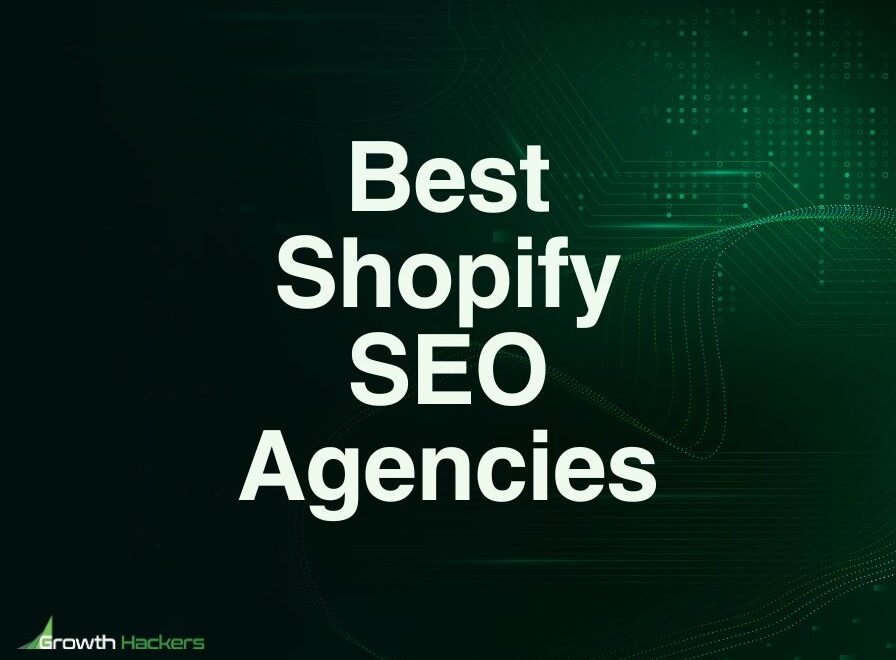How do your marketing methods fuel your business growth?
Marketing can be a challenge if you have a small budget, but you really need to get your startup noticed if you want to stay ahead of the competition. In fact, businesses that fail to prepare for their marketing needs (in terms of capital) are more likely to go bankrupt than those that do.
But because of this, businesses are faced with the dilemma of paying for popular marketing methods and going into debt or avoiding the marketing game altogether and going broke.
Or are they? While it’s true that paid ads can be expensive, search engine optimization (SEO) isn’t. Your business can build SEO in the background as you build your audience in other ways.
Or, maybe you’re a business that’s tried the more traditional methods, and you’re looking for something different. Maybe you’ve hit a wall with content creation and social media marketing, and you’re looking to attract a diverse audience by using less-conventional marketing tricks.
Regardless of what category you fall into, branching out can be a positive thing for your ROI and overall business if you utilize the following marketing methods you may not have considered.
Marketing Methods That Won’t Be Included In This Article
While traditional, outbound marketing, inbound, SEO, content, social media, and video marketing are all essential marketing staples, you’ve probably heard of them. In fact, you likely used one or more of them daily, so they won’t be included here. This list is exploring more underutilized methods.
It’s also important to note that some less-popular or unconventional methods may fall into one or more popular categories. For example, LinkedIn In-Mail marketing is an outbound and social media marketing method, but it’s included because it isn’t used as often as general posting.
7 Underutilized Marketing Methods Your Brand Should Invest In
Since the invention of digital marketing, businesses have constantly tried to reinvent the wheel by coming up with bizarre or unintentionally successful advertising tactics, like the following.
1. SMS (Text) marketing
Text messaging marketing, or SMS marketing, is successful because it’s more personal than other forms of marketing. Marketers often compare SMS marketing to email marketing because it gives you a direct and ongoing channel to communicate news and sales to your customers.
At the same time, SMS marketing is better than email marketing because it bypasses the noise coming from their inbox. Your customers are more likely to look at a text message because you aren’t competing with as many businesses. All phones send text notifications automatically.
Companies like OpenPhone allow you to send texts from a computer and issue auto-replies, bulk texts, and toll-free texting. Automation can make any marketing method easier.
However, your customers have to opt into your messaging before you can begin sending texts to them. You can ask your customers for their phone numbers when they sign up for an account on your website. Just make sure you put an opt-in/opt-out option to avoid trouble from the law.
2. LinkedIn InMail marketing
LinkedIn InMail is a LinkedIn feature that allows you to connect with other LinkedIn members via a private messaging platform. If you’re connected with the person you’re speaking to, you can send a message for free. Otherwise, you’ll have to pay to communicate with non-connections.
It’s better, but not necessarily faster, to send a connection request before you start a conversation on InMail, as the cheapest InMail option is $79.99/month for 50 credits (messages). Before you run away, consider this: LinkedIn InMail has a 57.5% open rate and 10-25% response rate.
In comparison, email marketing has a 21.6% open rate and a 1-10% response rate. The beauty of LinkedIn is context. Your prospects are business owners that don’t mind being sold to.
To create a successful InMail campaign, you need to keep your messages under 400 characters and use an impactful subject line. Something like “how (company) can grow your ROI by (X)% using (program name)” can really turn heads. Don’t forget to personalize every message.
Do you want to grow your business by utilizing more effective marketing methods?
3. Influencer and affiliate marketing
Both influencers and affiliate marketing are surprisingly underutilized despite their effectiveness. To start, influencer marketing doesn’t have to be expensive, and you don’t need to hire an influencer with a million+ audience to make a profit; you just need to understand your niche.
For example, most marketers hire influencers on Instagram and Facebook, but the audience on these channels are getting older. Younger buyers (15-25) are more likely to be swayed by influencers, so you should really be focusing on TikTok, Youtube, Twitch, and Snapchat.
You also need to match your product with the right influencer. An influencer that attracts a luxury audience won’t be able to sell budget items to their followers, even if they push really hard.
Any successful influencer + affiliate marketing program will include an effortless plug and should include products the influencer will actually use. When done right, affiliate marketing can be inexpensive, dynamic, and incredibly effective so long as you hire industry professionals.
4. Word-of-Mouth marketing
No one can make their own marketing campaign go viral, but there are aspects to a campaign that can help spread your business. The point of any word-of-mouth campaign is to get people talking, for better or for worse, because people are more trustworthy than faceless brands.
All viral ad campaigns have a great hook, so start there. Let your audience know what they’re getting into when they click your article, video, or anything else. Titles like “We Were Treated Like Absolute Garbage at BeautyCon” make you want to learn more about their experience.
However, a snappy hook alone won’t keep a person’s interest for long, so you also have to create videos that are with sharing. You need to make your ads better than anyone else’s.
Finally, try to make your marketing visual or niche-specific. For example, Uber’s Launch Campaign generated a lot of word-of-mouth advertising because they offered free rides during the South by SouthWest Festival. This positioned the brand as fair when compared to taxis.
5. Proximity/local marketing
Local businesses need to use proximity marketing to drive more business to their brick and mortar stores. This is even more true when you compete with nearby businesses offering with similar products as your store.
According to Nectafy, 88% of searches for local businesses on a mobile device either visit or call the business within 24 hours. That’s an extraordinarily high conversion rate.
Your local store can use Bluetooth, QR codes, Wi-Fi, geofencing (Note that Geofencing doesn’t equal Geotargeting), and NFC (contactless payment) to show users relevant product or service promotions. For example, a coffee shop could send a notification or airdrop a discount anytime a person walks into a geofence.
But if you don’t have a brick-and-mortar store, is proximity marketing still a viable channel? Yes, but its effectiveness depends on your business type, the products you sell, and the season.
If you sell campaign gear, but your business is out of New York, you can use targeted location ads to promote these products to the southern states during the Winter. Seasonal products and businesses especially benefit from targeted advertising that filters ads by location and IP.
6. Cause-based marketing
Cause-based marketing campaigns involve a brand tying themselves to a social issue or charity while promoting their business or products. These campaigns have decreased in popularity, but it isn’t because your audience isn’t giving. It’s because audiences see them as insincere.
Suppose your business sells non-cruelty-free makeup, and you start a partnership with an animal-rights association. Your audience will see this move as insensitive because it shows your company doesn’t actually care about animals but does care about looking like they care.
To pull off cause-based marketing, you have to choose a cause or charity that your brand would actually support. This makes it easier for your audience to agree to support this cause with you.
Millennials and Gen Z prefer to support brands that make an effort to change the world, but it can’t be all smoke and mirrors. If you care about animal rights, declare this in a marketing channel months, even years, before you create a campaign to fully align with this issue.
Grow your business faster by using powerful marketing methods now!
7. Guerrilla marketing
Guerrilla marketing techniques are similar to viral marketing, except that it’s often low budget and unconventional. Viral marketing relies mostly on trends, but guerrilla marketing tactics are usually more creative and “edgy.” Guerrilla marketing campaigns begin outside of the internet.
For example, the movie “IT” merged street art with iconic movie scenes by tying red balloons on sewer grates. Underneath the grates, the words “IT IS CLOSER THAN YOU THINK” were spray painted. People took pictures of this campaign and posted it online, where it went viral.
While guerilla marketing can be successful, especially with young audiences, some campaigns have caused panic. You really have to be a part of the cultural zeitgeist to pull this off.
If you’re an expert marketer or have a team that can pull off a winner, like Fronline’s interactive floor ad, The GRAMMYs singing posters, or Bounty’s giant popsicle, your business will be talked about for years. That kind of publicity will be worth the hard work it took to do it right.
Closing Thoughts About Marketing Methods You May Not Have Considered for Your Business
There are many marketing models and methods you may not have considered for your business. Each has its own unique set of benefits and drawbacks that you should take into account before deciding if it’s the right strategy for you.
If you’re looking for marketing methods outside of the traditional digital space, consider SMS marketing, LinkedIn InMail, influencer and affiliate marketing, word-of-mouth marketing, local marketing, cause-based marketing or guerrilla marketing. While each has its own unique set of challenges and considerations, they can all be highly successful when done correctly.
At Growth Hackers, we specialize in helping businesses harness the power of digital marketing to drive growth. We can help you identify the marketing methods that will work best for your company and put together a plan to help you achieve your desired results. If you’re interested in learning more about how we could help, please don’t hesitate to reach out to Growth Hackers. We would be happy to chat with you and see how we can get started working together.







